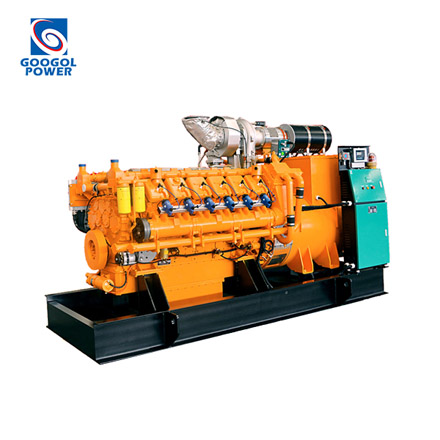- HOME
- ABOUT GOOGOL
- PRODUCTS
DIESEL ENGINE
GENERATOR SETS
- DOWNLOAD
- CASES
- NEWS
- CONTACT US

(1) DIFFERENT FUNCTIONS
(1.1) Gas engines generate power by burning natural gas or synthetic gas to produce electricity, propel vehicles and ships, and drive power generation.
(1.2) Internal combustion engines are a type of heat engine that burns fuel inside the machine and directly converts the released heat into power.
(2) DIFFERENT OPERATING PRINCIPLES
(2.1) Internal combustion engines mix fuel and air, ignite it within their cylinders, releasing heat that gener-ates high-temperature, high-pressure gases inside the cylinder. The expansion of these gases drives the piston, which, through a crankshaft mechanism or other structures, converts mechanical power and drives secondary machinery.
(2.2) Gas engines are cleaner and more environmentally friendly compared to diesel or gasoline engines. They can replace diesel and gasoline engines and are widely used in public transportation, oil field power generation, and other fields.
(3)DIFFERENT COMBUSTION TEMPERATURES:
(3.1) Gas engines operate at higher combustion temperatures, requiring higher material and process demands for components like combustion chambers and cylinder heads. The compression ratio varies;
(3.2) Internal combustion engines have the highest compression ratio, followed by gas engines.
SIMILARITIES BETWEEN INTERNAL COMBUSTION ENGINES AND GAS ENGINES
Power generation efficiency typically ranges between 30%to 40%, with common models achieving around 35%. Gas internal combustion engines stand out due to their higher power generation efficiency and high equipment integration, quick installation, and lower dust requirements in the gas. However, internal combustion engines also have drawbacks. Firstly, when burning fuels with low calorific values, the output of the units significantly decreases. Internal combustion engines require frequent oil and spark plug changes, consuming a considerable amount of materials, affecting equipment availability and reliability. These two key equipment utilization indicators have a significant impact on equipment utilization. Internal combus-tion engine equipment is sensitive to the moisture and hydrogen sulfide content in coking gas, which may lead to sulfuric acid corrosion, requiring necessary measures to overcome.